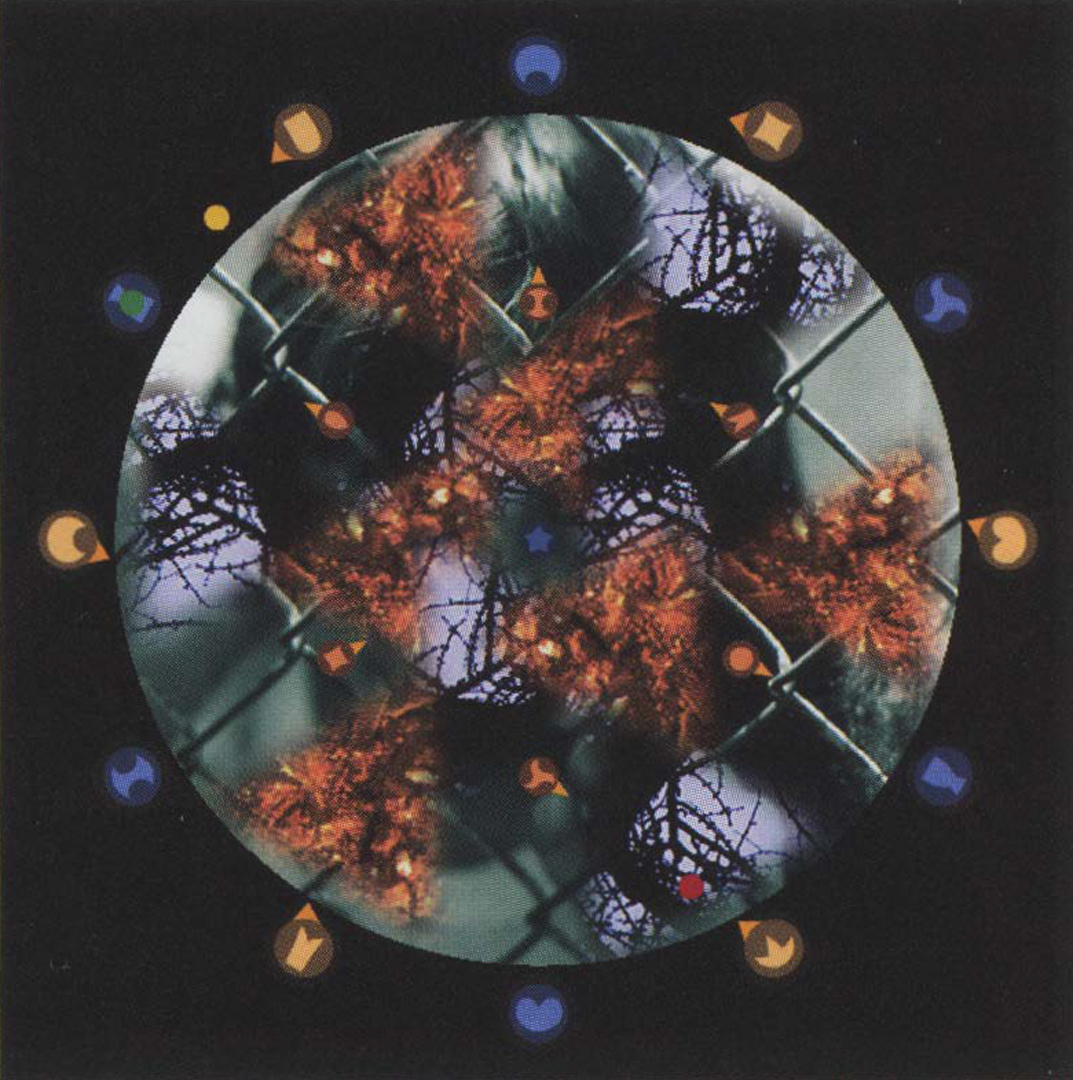Paul Hertz: Orai/Kalos
Artist(s):
Title:
- Orai/Kalos
Exhibition:
Creation Year:
- 2004
Medium:
- Interactive multimedia installation (table, sensors, video projector, audio, computer)
Size:
- 10-foot square floor area, 18-foot vertical space for downward projection
Category:
Artist Statement:
Orai/Kalos (from the Japanese orai – comings and goings, traffic, communication and the Greek kalos – fair, beautiful) presents images and audio in an interactive computer-driven installation that continually varies its content and composition. Orai/Kalos is an intermedia work, where sound and image events are driven by the same underlying structures, and an interactive work, where each visitor generates new configurations. The installation uses a circular table as a projection surface to display a computer-generated image. The table is equipped with embedded sensors. Visitors wave wands over the sensors to control the installation. Sound is emitted from stereo speakers beneath the table. Visual events consist of samples of natural and synthetic patterns. The patterns shift size, position, and rotation in overlapping layers, sometimes revealing hidden images. Sound events consist of natural and synthetic sounds. The sounds shift duration, pitch, and timbre using granular synthesis, a technique that uses overlapping layers
of short samples to produce a “cloud” of sound. Orai/Kalos is not “synesthetic art,” where specific visual and audio events correspond. Rather, its sound and image events are generated by encoded structures that are “transcoded” from one sensory modality to another. As an interactive work, Orai/Kalos requires social interaction to reveal
some of its hidden aspects: one person alone cannot reach all the sensors, and some events can only be triggered by three wands. In the installation, images and sounds of nature mix with images and sounds of human cities and technology. Reduced to patterns, natural and synthetic sounds and images blend hypnotically; however, when visitors begin to interact with the display, images and sounds sampled from communications media emerge. Topical and possibly distressing content displaces the soothing kaleidoscopic display, but participants may take compensatory pleasure in their apparent power to control events. Orai/Kalos attempts to examine how communications technologies are mixing geographical locations and persons together into new constellations. It is easy to be hypnotized by the speed and momentum of these changes, by the transformation of the world into patterns of information. Fortunately, our state of technological distraction is continually interrupted by events, large and small. Will our dearest
desire be to return to distraction, or will we waken enough to construct a more just world?
Technical Information:
Orai/Kalos is presented as a stand-alone Macromedia Director projector file and a group of MaxMSP files. When the files are opened and the projector is launched, animated “agents” appear over a continuously shifting display of pattern samples. The agents’ position governs the average position from which a sound buffer is read to create a spatialized granular-synthesis “cloud.” Agents move between “nodes” superimposed on the images. Users can control the agents’ paths by touching the nodes with magnetic wands, triggering sensors embedded in the display surface. Different combinations of nodes generate specific behaviors in the display and the agents: new images and sounds arrive; their size, number and symmetry change; the speed of the agents and hence of events changes; the sound becomes sparse or dense, etc. Image changes correspond to sound changes in subtle but audible ways. Although I use it to contrast soothing patterns with disturbing media imagery, Orai/Kalos can use any sounds and patterns. Now in its first revision, the application permits a designer to replace the current image and sound files. Although designed to use numeric input from sensors, Orai/Kalos can be controlled with a mouse or over a network. A tool in the Director file can be used to assign transition probabilities to govern the sequencing of images, permitting a degree
of compositional control. Granular synthesis parameters for the sounds can also be altered.





